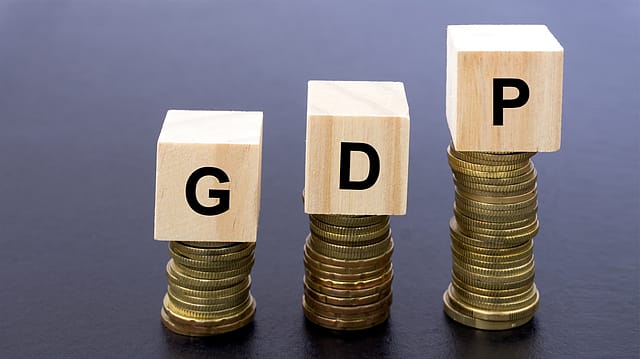World Bank vs UNCTAD: Whose India GDP projection to trust?
ADVERTISEMENT

Perplexed why United Nations Conference on Trade and Development (UNCTAD) slashed India's GDP growth projections for 2022 from 6.7% to 4.6% in its March update? Wondering why UNCTAD is so pessimistic while the World Bank is more optimistic to project India's GDP growth for 2022-23 at 8%. Reserve Bank of India (RBI) itself is expecting a 7.2% growth for the current year? The seemingly divergent forecasts on India's gross domestic production growth may be due to multiple reasons, all valid in their own ways, though projections made by institutions closer home, the likes of the RBI, could be more realistic, say experts.
UNCTAD's March 24 update which projected India's GDP growth for calendar year 2022 as 4.6% was a shocker. Not only was it the lowest among all growth projections made by agencies within the country and outside, it was the sharpest in terms of fall in growth projections. Earlier during the month, UNCTAD had stated that the Indian economy was expected to decelerate to 6.7% growth in 2022 (from 7.1% in 2021) due to a host of reasons. Few days later, came the downward correction to 4.6% after it factored in the possible negative fallout of the Russia-Ukraine war on India including energy access and prices, primary commodity bottlenecks, reflexes from trade sanctions, food inflation, tightening policies and the financial instability. In its update to the Trade and Development Report, UNCTAD also revised down its global economic growth projection for 2022 to 2.6% from 3.6% citing the war in Ukraine and tightening macroeconomic policy in developed economies. The World Bank's assessment of the impact of the Russia-Ukraine war on India's growth was more modest. The GDP 2022-23 estimates underwent a downward revision in its latest update that came on April 13 from 8.7% to 8%. The projections, while different from that of Indian estimates, have logic of its own, it seems.
Pronab Sen, programme director, IGC India Programme and former chief statistician of India, says that the difference in methodologies should be considered. "Remember these are projections. When you deal with projections, the manner in which you make the projection depends on a whole bunch of factors including what you are assuming as the growth of the global economy other than the economy that you are talking about, and the dollar-rupee exchange rate you project. Both World Bank and UNCTAD estimates are not indicating growth in real rupee terms, these are growth in dollar terms. For instance, if the rupee is expected to depreciate, then the growth rate in dollar terms will be low. If you expect the rupee to appreciate, then the growth rate will be high. That makes a big difference. Assume that the real growth rate in rupee terms remains the same, but you expect the rupee to depreciate by 2.1 percentage points. That gives you the correction right away. Nothing else is needed. And 2.1 percentage points depreciation is not such a big deal," Sen explains.
December 2025
The annual Fortune 500 India list, the definitive compendium of corporate performance, is out. This year, the cumulative revenue of the Fortune 500 India companies has breached $2 trillion for the first time. Plus, find out which are the Best B-schools in India.
The World Bank's "South Asia Economic Focus Reshaping Norms: A New Way Forward" report published on April 13 says countries in South Asia are already grappling with rising commodity prices, supply bottlenecks, and vulnerabilities in financial sectors. "The war in Ukraine will amplify these challenges, further contributing to inflation, increasing fiscal deficits, and deteriorating current account balances. Though GDP growth continues to be solid during the recovery, all countries in the region will face challenges ahead. In India, household consumption will be constrained by the incomplete recovery of the labor market and inflationary pressures," the report said while cutting India's GDP growth forecast for 2022-23 to 8% from 8.7%. This estimate is higher than that of RBI's latest GDP estimates for the country. The Monetary Policy Report for April 2022 said it projects India's real GDP growth at 7.2% in 2022- 23 on account of the baseline assumptions, including crude oil (Indian basket) at $100 per barrel, the survey indicators, and model forecasts.
RBI and other India-focused analysts could be more precise in their assumptions, says N R Bhanumurthy, vice chancellor, BR Ambedkar School of Economics University, Bengaluru. "Unlike Indian institutions and some analysts that provide the country's GDP estimates on a regular basis, World Bank and UNCTAD may not capture the latest (country specific) developments (in their reports). In that sense, Indian estimates capture the recent information set. World Bank and UNCTAD would not have completely endogenised the Russia-Ukraine war because they do a multi-country analysis and the reports (due to the time lag in getting approvals) might take about two months (to get published). That perhaps explains why their numbers vary from that of Indian estimates," he said.
Sachchidanand Shukla, chief economist of the Mahindra Group, says that at least in the case of UNCTAD there could be problems with the forecasting model they follow. "UNCTAD is arriving at this number through a model called the UN Global Policy Model (GPM) - which is a tool for the empirical investigation of historic trends, current conditions and 'what if' scenarios for the world economy. The model was last updated in 2013, which means it is almost a decade old model. Hence it doesn't really capture the latest macro-parameters and post pandemic parameters like vaccination, mobility etc. That explains why their numbers are very low. You can take UNCTAD numbers seriously for global trade, but certainly not for India’s GDP projections," Shukla says.
